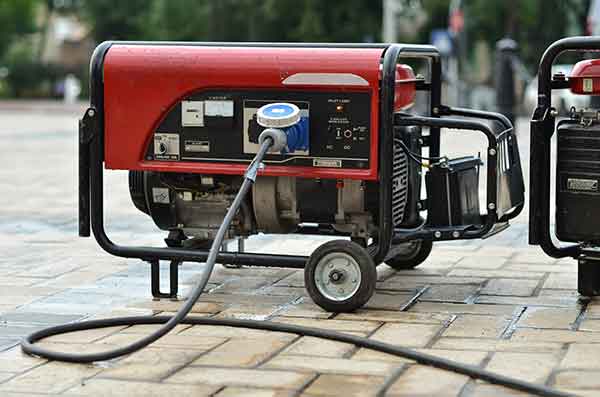Generator Safety Practices
When a hurricane strikes, that usually means prolonged power outages are usually not far behind it. When riding out the storm at your home or business, hopefully, you’re set up with a standby or portable generator to help keep some level of comfort during the outage. Although generators are extremely great resources for keeping us comfortable during a storm, there are some hazards to take into consideration when you’re using a generator.
Safety should be your first priority when using a generator. There are three things you should be cautious of when operating a generator. 1. The threats of carbon monoxide emitted from the generator’s exhaust. 2. Overloading or mishandling the electricity produced by the generator. 3. The possibility of fires. Although generators present these hazards, they can be easily avoided by practicing proper generator safety.
Carbon Monoxide
When addressing the issue of carbon monoxide, proper ventilation is key. Portable generators produce as much carbon monoxide as several of cars and can kill a person within minutes, according to the CPSC. Carbon monoxide poisoning sends more than 20,000 people to the emergency room each year, according to the National Institute of Standards and Technology. This is why generators should never be operated anywhere inside a home, including in garages or basements. If you’re using a portable generator, it needs to be between 20 to 30 feet away from the house while it’s running to reduce the possibility of carbon monoxide poisoning. Proper ventilation is key. To monitor your CO levels, your house should have a carbon monoxide detector. Carbon monoxide is invisible and odorless, so detectors can warn us if there are dangerous levels in our living spaces. This can mean the difference between life and death.
Overloading & Mishandling Electricity
The electricity created by generators presents the same hazards as normal utility-supplied electricity. Shocks and electrocution can unfortunately be a result of mishandling a portable generator, but this can be avoided by practicing safe generator handling methods. Avoid attaching a generator directly to the electrical system of your home. If you have a generator that is capable of powering your whole home, you must get the generator installed by a qualified electrician.
If you’re using a portable generator to power a select number of essential appliances, make sure to always plug appliances directly into the generator using the manufacturer’s supplied cords or three-pronged (grounded) extension cords. Faulty extension cords pose a problem as well, which is why you should inspect extension cords to make sure they are not damaged, frayed, or abraded.
Fires
When dealing with any sort of electricity, there is always the threat of fires if mishandled. Overloading utility outlets in your home can produce the same effect as overloading a generator; both can result in fires. Fires also become a possibility when generators become hot from running for long periods of time and then they remain hot for long periods after they are turned off. It’s extremely important to let a generator cool down before refueling because any spilled fuel could ignite if the generator is still very hot. Because of this risk, fuel should be stored far from the generator. If gas or any other flammable material is stored near a hot generator, it could ignite from the generator’s heat.
These all may seem like drastic things to consider when using a generator, but not only are they very possible, they are easily avoided. If you take the extra steps to be cautious and practice safety when using your generator, then your generator will serve as a saving grace in a time of need during severe weather. If you have any questions about generator safety, we have our service team available to answer your questions.

